

A few weeks ago, Archinect reached out to the architecture community to investigate the return-to-office plans since the large migration to remote work. We asked readers to contribute to a brief survey to help us better understand the current climate in regards to potential reentry to the office.
48 percent of respondents work in a firm with 50+ people, 30 percent were from medium-sized firms of 10-49 people, and the remaining 22 percent came from small firms of 9 people or less. Over 55 percent of respondents work in an architectural staff role, and close to 35 percent of respondents were Principals or Firm Owners.
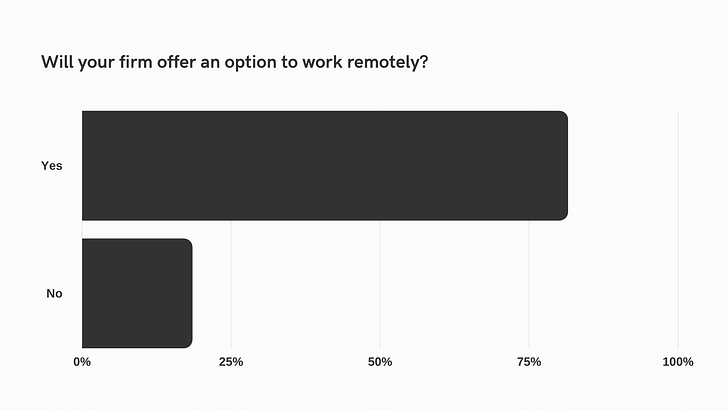
Of those who participated, 33 percent had already returned to in-person work, 26 percent have plans to return, and close to 19 percent do not have plans to return to in-person office work. 40 percent of respondents said that returning to the office would be optional, and another 44 percent said that it would be required for some but optional for others. Only 15 percent of respondents said that returning to work would be required.
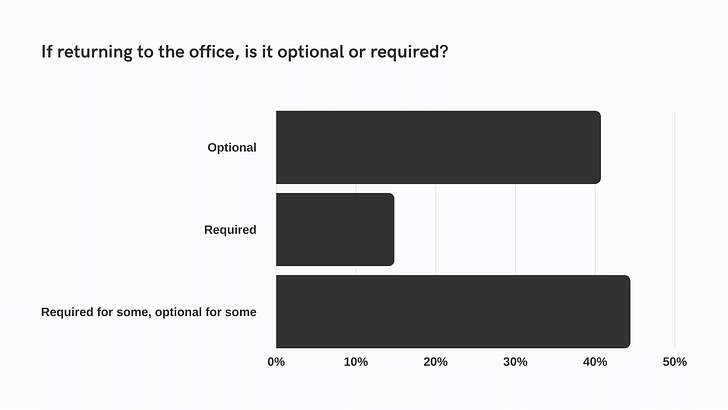
Requirements to return to in-person work could prove difficult for team members who are not yet comfortable with in-person work. Roughly 44 percent of respondents said that they did not feel safe returning to work, yet about 55 percent said safety was not a concern. However, close to 75 percent of respondents said their firms would provide an option to work remotely.
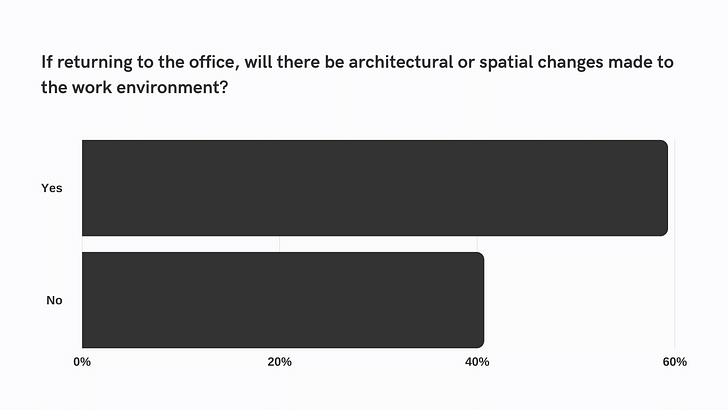
“We reopened’ our office in June last year after being closed and fully remote for nearly three months with the understanding that any staff that felt uncomfortable being in the office could bring their concerns forward and that alternative work options could be reviewed,” Brad A. Hastings, Principal at Becker Morgan Group, told Archinect. “We’d developed an “Alternative Work Arrangement” policy in early 2020 which provided guidance for staff to be approved for alternative work arrangements (flexible schedule/work from home/etc.) on a case-by-case basis.” Becker Morgan Group has rigorously followed CDC guidelines, prioritizing the health and safety of team members.
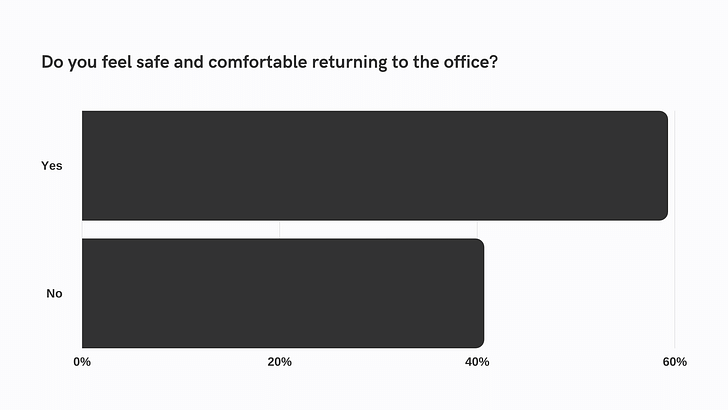
There is a range of precautions and measures firms are taking for return to the office, including:
Masks in common areas
Social distancing
Regular cleaning of high-touch surfaces (multiple times a day)
One way corridors
Hand sanitation stations throughout workspace
50 percent capacity with rotating schedules
Additional barriers
Virtual meetings while in office (meeting from desk)
In speculation of the future, many are hopeful but naturally uncertain. Some firms have already begun to outline detailed plans in collaboration with staff members, while others have yet to establish a course of action. “We are formulating a remote work policy now. We feel strongly that remote work is permanent and will be some portion of our week,” shared one respondent, with many others expressing possible retention of a work-from-home policy.
However, many others have made intentional efforts to return to in-person work. “We've returned to the office with safety precautions in place and work to ensure staff is comfortable with their individual situations,” said another respondent. “Remote work is offered and utilized intermittently by many. People in the office wear masks unless seated at their workstations which are spaced to allow the CDC guidelines to be met.”
“Given the hybrid nature of our current arrangement, the studio functions less like a Home Base and more as a Base Camp,” Anthony Laney, founder of Laney LA, told Archinect. “Our team comes and goes, as needed. On average, attendance hovers around 25% capacity.” The Laney LA team has been staying connected in a variety of ways. For example, large project meetings that require arranging several physical samples feature a wide-angle stationary camera and a variety of mobile web-cams to enable virtual attendees to participate in the critiquing process.
Laney has been consistently collaborating with his team on what’s working and what needs improvement during this time. However, above all, for the Laney LA team, in-person work is an essential part of what Laney says is “team unity, emotional legibility, and unplanned interactions.” These are qualities that transcend a desire for productivity and accountability. Contrarily, the push for eventual in-person reconnection grows from a seed of support and harmony.
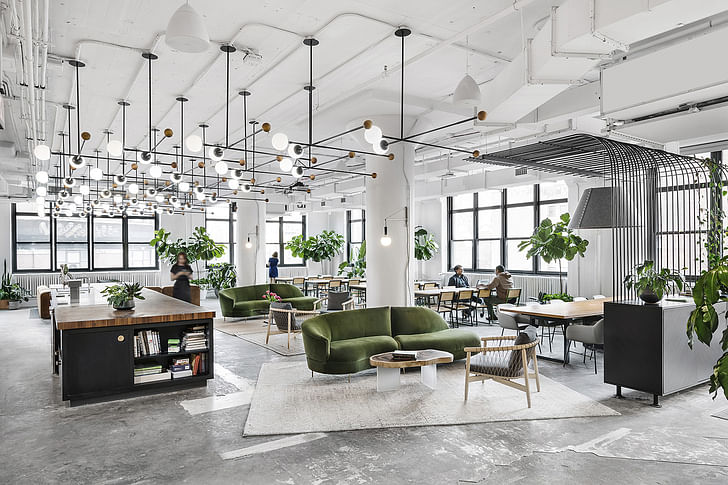
In summer last year, in a piece titled The Architecture Industry on Workplace Design and Returning to the Office, we covered a wide range of perspectives on the anticipated changes to office work. International architecture and design firm Woods Bagot provided four distinct workplace models as part of its early research into how the pandemic would affect the traditional office environment: the “Culture Club,” the “In and Out,” the “Community Nodes,” and finally, the “Collectives.” Check out that last piece for more on those. Archinect reconnected with the firm to see how its predictions have played out since mid-last-year.

“As predicted, all four scenarios are being used in compliment. After a year of working remotely, it’s become apparent that increased flexibility and agility in approach and mode of work is required,” Amanda Stanaway, Global Workplace Design Leader at Woods Bagot, told Archinect. “The hybrid model is changing the way we program offices and predict team dynamics. In most cases, only minor changes have been made to the physical spaces, as most were ABW or agile. We see increased focus on managing, understanding, monitoring, and curating populations working groups and teams.”
Speaking to how Woods Bagot is managing its own internal teams, Stanaway said, “Woods Bagot has 16 studios around the world, and each one is currently responding according to local conditions. Our New York and San Francisco studios, for instance, are open, and employees can choose to work in the office or from home.” However, most of Australia, Hong Kong, and China have been back to work since last September, Stanaway explained further.
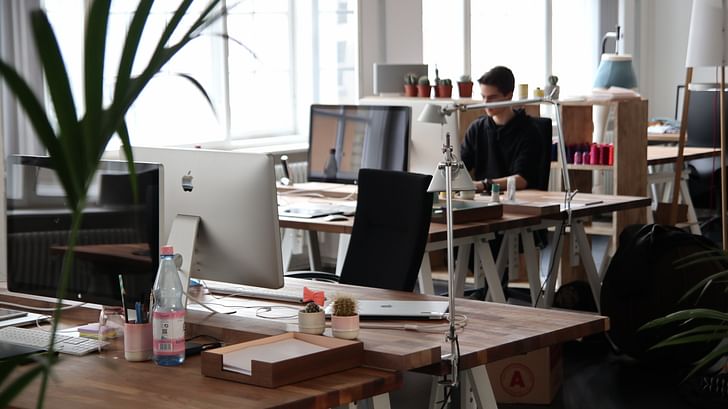
In a recent Curbed article, Caroline Spivack challenges just how effective environmental changes will diminish the spread of COVID-19. The writer covers an impressive list of changes that have been introduced at various office developments throughout New York City. Some of those features include a vending machine offering self-administered COVID-19 tests (for $119), a phone app that allows building goers to see how many people are waiting for an elevator in the lobby, and even bathrooms that are now individually tiled rooms with “minimal grout lines, a feature that is supposed to reduce germs.”
According to Spivack, occupational and environmental-health researcher and professor Robyn Gershon said: “A lot of what people are trying to do is put control measures in place to give the illusion of safety...They’re based on our best knowledge, but it’s not for sure that these things can make any difference.” Ultimately, Spivack concludes, the precautions that are more effective are things like doubling up on face masks, maintaining social distancing, and “beefing up building ventilation, installing better filtration systems, and staggering shifts for employees.”
Sean Joyner is a writer and essayist based in Los Angeles. His work explores themes spanning architecture, culture, and everyday life. Sean's essays and articles have been featured in The Architect's Newspaper, ARCHITECT Magazine, Dwell Magazine, and Archinect. He also works as an ...
3 Comments
Thanks Sean - Really interesting piece! We wondered why there was no mention of the reopening of schools and childcare as a major factor in returning to the office. Right now men and women are forced to maintain rigorous school and care schedules because there are no services for children. Families are having to make tough choices about which parent goes back to the office and which stays at home (and we know the choice is usually a woman). Hopefully offices will consider this as part of their program for returning to the office.
Hello Sean, it is always interesting to hear how firms are responding to remote work/return-to-office. It would be interesting to see some of the graphs above broken out by age and gender. I feel like there is a horizontal split age-wise of who wants to be in the office/wants others to be in the office and those who prefer to predominately work from home. I agree with AWA+D in that planning around school/childcare is an added challenge. In conversations I've had with peers in other industries I see much more flexibility and companies committing long term to a scenario (long term being 6+ month chucks of time, usually correlated with school milestones) so that staff can plan accordingly instead of the ambiguous, "we'll get everyone back in the office as soon as we can." It'll be interesting to see what gets adopted industry wide and how prepared firms are for the next pandemic.
I also thought there would be a clear age correlation. Among my fellow workers that hasn't been the case though. If anything, age and number of school-age children at home, are better predictors of whether they wish to stay remote forever.
Block this user
Are you sure you want to block this user and hide all related comments throughout the site?
Archinect
This is your first comment on Archinect. Your comment will be visible once approved.